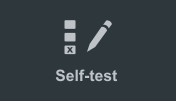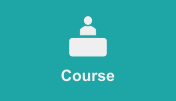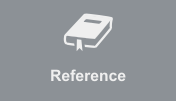Information resources
For each area of digital literacy, we have selected online resources that can be used to improve one's knowledge and skills. We offer links to the University of Basel own's resources as well as further internet links.
You can use the navigation menu above to find your way around. Are you unsure about where you should begin? Then continue reading on this page, where you will find step-by-step instructions.
Instructions
1. Take the test
You can begin by taking the Test Digital Literacies. You results will entail an overview of your strength and weaknesses in each literacy area. You will also receive recommendations and suggestions about learning materials you can use to strengthen your skills.
2. Choose one or several literacy areas
On the basis of your test results, you can choose one or several areas in which your would like to expand your knowledge and strenghten your skills. To this end, you can either use the resources provided at the end of the test, or the resources we have gathered on this web portal, or a mixture of both.
3. Which kind of information resource is right for me?
We have classified the information resources in this web portal in six categories, which correspond to different goals and learning styles:

1. Self-tests
Selft-tests are online questionnaires and quizzes to evaluate one's knowledge and skills in one particular area of digital literacies.

2. Self-learning resource
Self-learning resources are didactically prepared learning materials on a specific topic that are especially suited for independent learning. Self-learning resources usually offer a systematic treatment of the topic on hand.

3. Courses
Courses are a form of knowledge transmission in which the interaction between teachers and students is central. Courses are designed and supervised by one or several instructors and take place within a specified period of time. The interactive part of the course can be in-class, online, or a mixture of both (hybrid).

4. Guidelines
Guidelines are detailed, concrete, often step-by-step instructions on how to perform specific tasks. They are useful when learning a new tool or technique.
![[Translate to English:] Tool](/fileadmin/user_upload/digital_skills/tool5-ico-klein.png?1618765906)
5. Tools
Tools are instruments humans can use to perform concrete tasks more quickly, more precisely or more safely.

6. References
References are documents with in-depth information on specific topics. Their form range from organizational reports and specialized websites to scientific literature.
Get started by taking the test or by directly selecting one area of digital literacy where you would like to make progress:
- Self-test Digital Literacies
- Information resources on general ICT proficiency
- Information resources on information, data and media literacy
- Information resources on research, development and innovation
- Information resources for communication, collaboration and participation
- Information resources on learning and teaching
- Information resources on identity, safety and well-being

